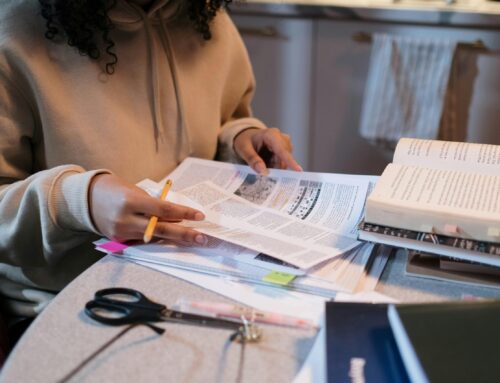You’ve probably thought about including a few letters of recommendation with your student’s homeschool transcript, but it can be challenging knowing the best ways to approach these.
In today’s blog post, we’ll walk you through the best strategies for getting recommendation letters, which are an important part of helping colleges see the whole picture of a student’s skills and abilities—beyond just academics. More than likely, all of the colleges on your student’s shortlist expect to see these letters, and academic institutions put a lot of stock in what they say.
So, what matters the most for homeschool students when it comes to recommendation letters? Here are six practical tips for pulling these letters together in the right way.
1. Know what your top schools want
Smaller schools with a more limited application pool are more likely to pay close attention to your recommendation letters. And while these letters are less important at larger state schools with tens of thousands of applicants each year, they are still an important “check-the-box” item for your student’s college application.
You should also be aware that some schools no longer require or accept letters of recommendation. So, be sure to research this component to know what your top-choice colleges want as part of their application process.
2. Homeschool parents shouldn’t write a recommendation letter
Maybe it goes without saying, but you as a homeschool parent shouldn’t write a recommendation letter on behalf of your student. Even as your student’s primary teacher or principal, your recommendation doesn’t carry the weight of an outside party.
Instead, take the opportunity to leverage relationships that flow from a homeschool high-school co-op or dual enrollment course at a community college. Here, a co-op teacher or community college professor may be willing to pen a great recommendation letter on behalf of your student—and their objectivity will be invaluable.
3. Get started early
When it comes to identifying the best prospects to approach about writing a recommendation letter for your student, it’s best to get an early start. Aim to get the ball rolling during your student’s junior year—or the summer bridging the junior and senior year at the latest—since most students are in full college application mode by early in their senior year.
When ready, make a list of prospects and then systematically reach out to them by phone, email, or even in person. Keep in mind that they are likely juggling a full plate of activities as well, so be sure to give them the courtesy of plenty of time to write the letter—typically four to six weeks at a minimum.
4. Aim to get at least two letters
When it comes to recommendation letters, the more the merrier. While two letters is the bare minimum, three or four are optimal. Why? Because each letter included with your student’s application adds another dimension to his or her interests, passions, and skill set—and increases the likelihood of acceptance.
You should choose a teacher, boss, or mentor with whom your student has a current or very recent relationship. You can also ask a coach, minister, or the head of a nonprofit where your student volunteers to write a letter of recommendation.
5. Help out by providing as much detail as possible
The best letters are those that highlight accomplishments, personality traits, and skills not already specified in other application materials. In particular, letters that touch on your student’s ability to work both independently as well as in a team setting are helpful.
Given this, be sure to share your student’s current college and career goals, intellectual interests, and top-choice schools with the folks who will be writing recommendation letters so that they can include relevant details that resonate well with admissions staff—and strengthen the application.
6. Follow up with thank-you notes
Although writing thank-you notes nowadays is an increasingly lost art, be sure that your student sends a note of thanks to each person who writes a recommendation letter on his or her behalf. Not only is it the right thing to do, it teaches your student proper etiquette that will reap dividends in the future—and leaves all parties involved with a smile on their face.
Wrapping up
The college application process is often long and arduous—with multiple components ranging from the application itself to essays and including transcripts, course outlines, college test scores, and recommendation letters.
While each component is important and weighted differently from school to school, the recommendation letter from a key teacher, coach, boss, mentor, minister, or community leader offers an essential adult perspective on a student’s likelihood of success in a college academic setting—and can be the decisive factor in getting into a particular college or university.








Leave A Comment